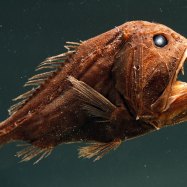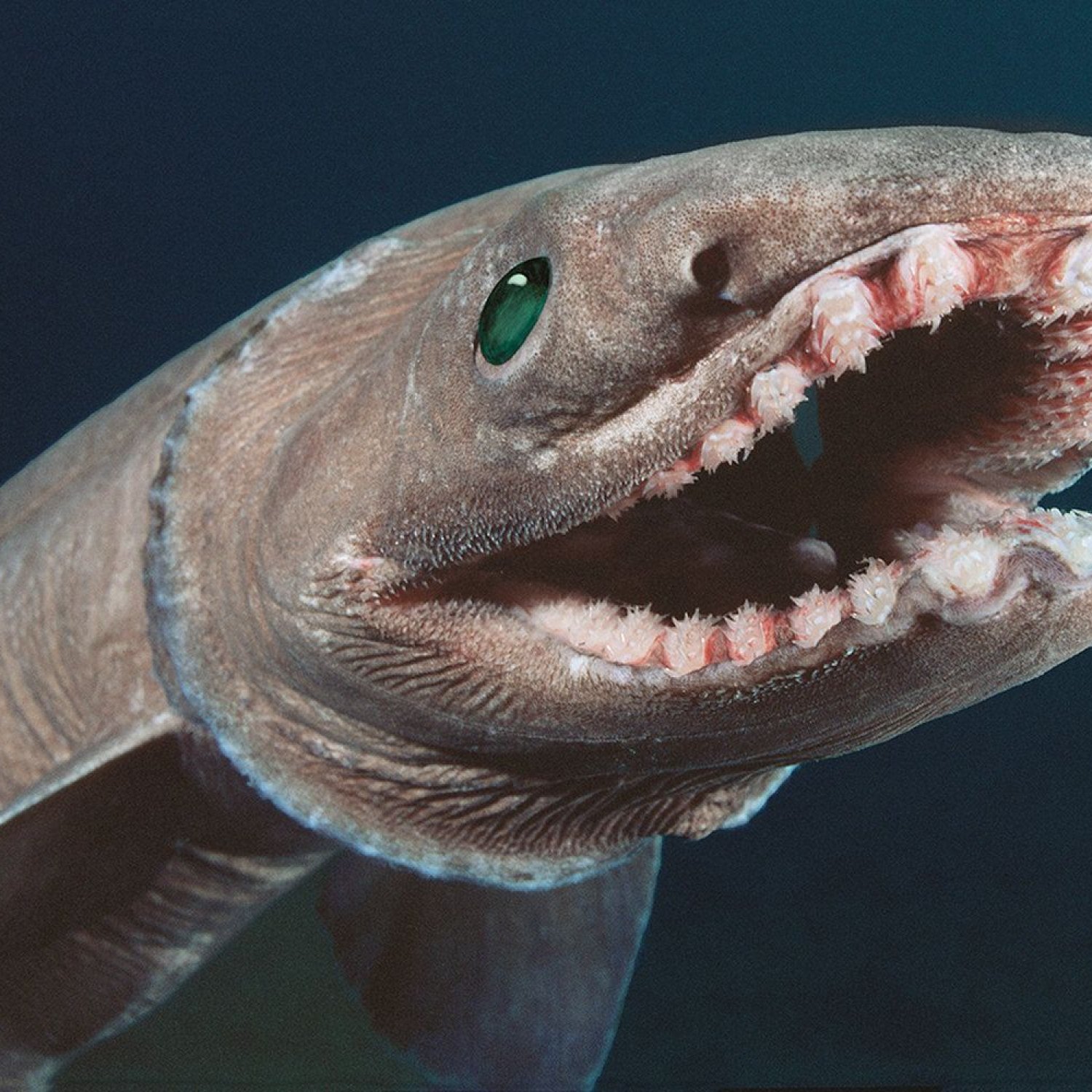
Frilled Shark
Up to 6.6 feet
The frilled shark, known for its eel-like body and prominent frill around its head, can reach up to 6.6 feet in length. This elusive creature can be found in the deep-sea trenches and slopes, belonging to the Chlamydoselachidae family. Its unique appearance and habitat make it a fascinating addition to the world of animals.
Animal Details Summary:
Common Name: Frilled Shark
Kingdom: Animalia
Habitat: Deep sea
The Enigmatic Frilled Shark: A Deep-Sea Predator
The ocean is a vast and mysterious world, covering more than 70% of our planet's surface. It holds an incredible diversity of life, much of which remains unexplored and unknown to us. One of the most enigmatic creatures of the ocean is the frilled shark, also known as Chlamydoselachus anguineus.With its long, eel-like body and distinct frilly gills, this shark has often been described as a living fossil Frilled Shark. In fact, it has been around for more than 80 million years, making it one of the oldest living species on Earth. But what makes this creature truly fascinating is its unique characteristics and behavior, which have only recently been discovered and studied due to its elusive nature.
Ancestry and Classification
The frilled shark belongs to the class Chondrichthyes, meaning "cartilaginous fish," which includes sharks, rays, and chimeras. It is further classified under the order Hexanchiformes, which refers to sharks with six or seven gill slits on the sides of their bodies. This order also includes other deep-sea dwellers such as cow sharks and Greenland sharks.But what makes the frilled shark stand out is its classification as the sole member of the family Chlamydoselachidae, which means "cloak sharks." This unique classification reflects its distinct appearance and behavior that set it apart from other shark species.
Habitat and Distribution
The frilled shark is found in the Atlantic and Pacific Oceans, with records of sightings in various locations such as the coasts of France, Portugal, and Spain, as well as Japan, Australia, New Zealand, and the coast of the United States. However, its exact geographical distribution remains uncertain due to its elusive nature and its preferred habitat in deep-sea trenches and slopes, making it difficult to spot and study Forest Cuckoo Bumblebee.These sharks have been observed to reside in depths of up to 5,000 feet, where the water temperature can drop to as low as 37°F. This makes their habitat a cold, dark, and extremely high-pressure environment, which requires special adaptations.
Appearance and Anatomy
The frilled shark's appearance is often described as primitive, with a long, slender, and eel-like body that can reach up to 6.6 feet in length. Its body is covered in thick, dark brown or gray skin, with a distinctive white line running along its sides and a distinctive narrow head with small eyes.But what makes the frilled shark truly fascinating is its unique set of teeth. Instead of the sharp, pointed teeth we usually associate with sharks, the frilled shark has several rows of small, backward-facing teeth. These teeth are specially adapted for grasping and holding on to prey, rather than tearing it apart like other sharks.
Feeding Behavior
The frilled shark is an ambush predator, meaning it lies in wait for its prey to swim close enough before striking. This behavior is a result of its preferred habitat in the deep sea, where food can be scarce, and energy conservation is crucial. In fact, this shark is known to have extremely slow metabolism, which allows it to go for long periods without food.Once the prey is within range, the frilled shark uses its expandable jaws to create a vacuum, sucking in water and any nearby prey. Its backward-facing teeth then make it almost impossible for the prey to escape, making this shark an efficient hunter.
Behavior and Reproduction
Due to its elusive nature, not much is known about the frilled shark's behavior. However, it is believed to be a solitary creature, rarely seen by humans unless accidentally caught in deep-sea fishing nets. These sharks are also known to have a unique method of reproduction called oviparous, where the female lays eggs that hatch outside the body.While much of this shark's behavior remains a mystery, it is believed that they have a relatively slow growth and maturity rate, with some individuals reaching sexual maturity after 4-4.5 years.
The Frilled Shark and Humans
Despite its eerie appearance and fierce feeding behavior, the frilled shark poses no threat to humans. Its elusive nature and habitat in the deep sea make it unlikely for humans to encounter these creatures. However, due to their preferred habitat in deep-sea trenches and slopes, they are at risk of being caught in deep-sea fishing nets, which could have a detrimental impact on their populations.In some cultures, the frilled shark is considered a delicacy and is caught for food, while in Japan, it is known as "the demon of the deep sea" and is believed to bring bad luck. However, due to its limited distribution and low reproductive rate, it is not considered a sustainable food source.
Conservation Efforts
The frilled shark is listed as a species of least concern by the International Union for Conservation of Nature (IUCN), but there is still much to learn about this elusive creature. Conservation efforts have been focused on preserving its deep-sea habitat and minimizing the use of deep-sea fishing methods that could harm this species.As with many deep-sea creatures, the frilled shark remains a mystery to us, with much of its behavior and ecology yet to be discovered and understood. With the advancement of technology and research, we hope to unravel the secrets of this fascinating creature and ensure its survival for many more years to come.
In conclusion, the frilled shark is a truly unique and enigmatic creature, with its peculiar appearance, behavior, and habitat. Its presence in the depths of the oceans reminds us that there is still much to explore and discover in our world's vast oceans. And with proper conservation efforts, we can ensure that this ancient species continues to thrive in its deep-sea home.

Frilled Shark
Animal Details Frilled Shark - Scientific Name: Chlamydoselachus anguineus
- Category: Animals F
- Scientific Name: Chlamydoselachus anguineus
- Common Name: Frilled Shark
- Kingdom: Animalia
- Phylum: Chordata
- Class: Chondrichthyes
- Order: Hexanchiformes
- Family: Chlamydoselachidae
- Habitat: Deep sea
- Feeding Method: Ambush predator
- Geographical Distribution: Atlantic and Pacific Oceans
- Country of Origin: Japan
- Location: Deep-sea trenches and slopes
- Animal Coloration: Dark brown or gray
- Body Shape: Eel-like
- Length: Up to 6.6 feet
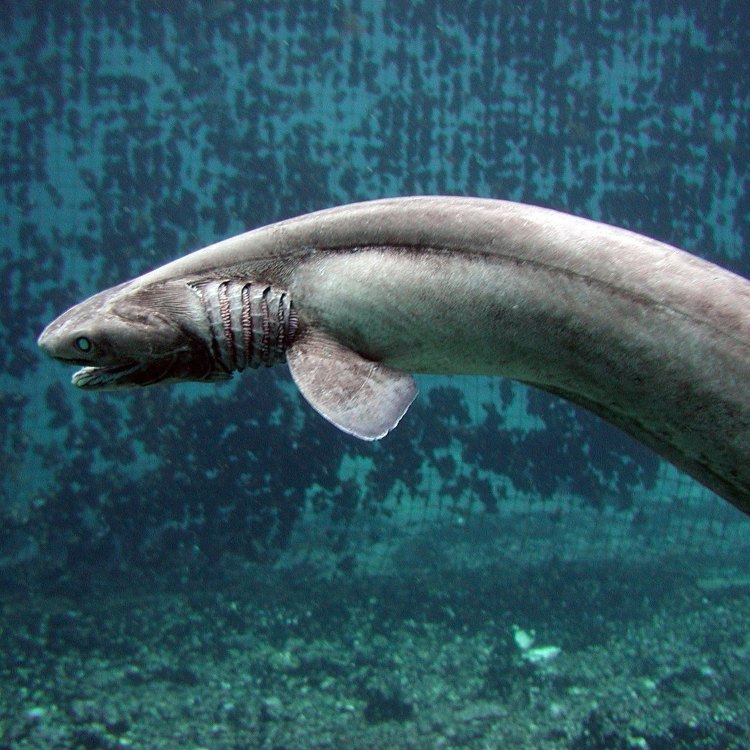
Frilled Shark
- Adult Size: Around 6 feet
- Average Lifespan: Up to 25 years
- Reproduction: Ovoviviparous
- Reproductive Behavior: Males have claspers to transfer sperm
- Sound or Call: Unknown
- Migration Pattern: Unknown
- Social Groups: Solitary
- Behavior: Largely sedentary
- Threats: Overfishing
- Conservation Status: Least Concern
- Impact on Ecosystem: Top predator
- Human Use: Commercial fishing
- Distinctive Features: Frilled appearance of the gill slits
- Interesting Facts: Considered a living fossil, with no close relatives
- Predator: Unknown
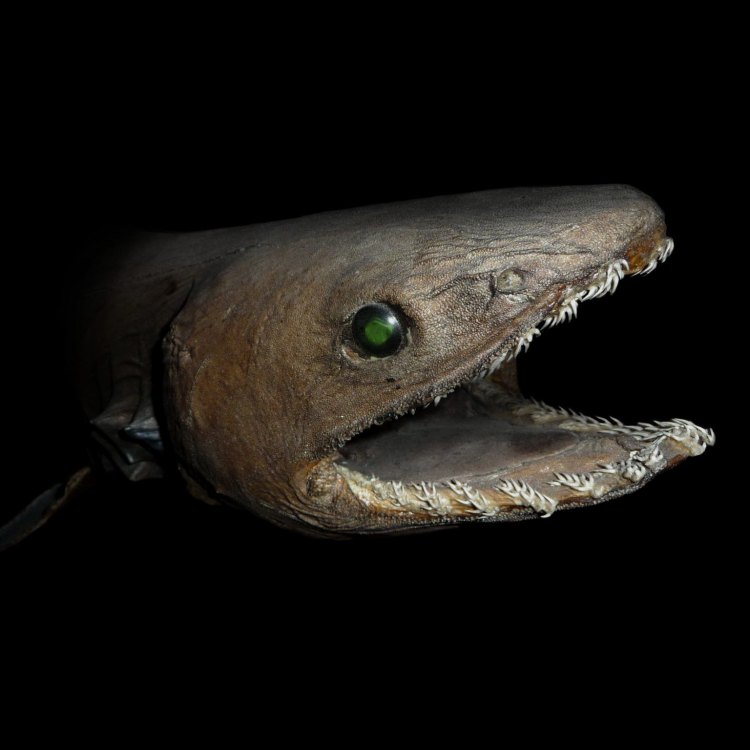
Chlamydoselachus anguineus
The Enigmatic Frilled Shark: A Living Fossil and Top Predator
In the vast depths of the ocean, there exists a creature that looks as though it belongs in a nightmare. Known for its unique appearance and reclusive nature, the frilled shark has fascinated and mystified scientists since it was first discovered in the late 19th century. This elusive creature continues to evade our understanding, but through research and observation, we are gradually uncovering its secrets. Join me as we dive into the mysterious world of the frilled shark PeaceOfAnimals.Com.The frilled shark (Chlamydoselachus anguineus) is a large species of shark that can grow up to 6 feet in length and has a lifespan of up to 25 years. This shark is not only known for its size, but also for its distinctive frilled appearance of its gill slits, giving it a fierce and menacing appearance. It is also commonly referred to as a "living fossil," as it has hardly evolved in appearance over the course of millions of years.
The existence of the frilled shark has been known for centuries, but it wasn't until 1885 that it was formally described and given the scientific name Chlamydoselachus anguineus. Since then, it has been found in all major oceans around the world, but is typically found in deep waters ranging from 400 feet to over 5,000 feet. Due to this deep-sea habitat, it is considered a rare and elusive species, making it difficult to study.
One of the most fascinating aspects of the frilled shark is its reproductive behavior. Unlike most species of shark, the frilled shark is ovoviviparous, which means it gives birth to live young rather than laying eggs. However, unlike other ovoviviparous sharks, the frilled shark does not have a placental connection to its offspring Flying Snake. Instead, it nourishes its young through a yolk sac until they are ready to be born. This unique method of reproduction is thought to be an adaptation to the shark's deep-sea lifestyle, as it allows for a larger number of offspring and less competition for resources.
Mating behavior in frilled sharks is still largely unknown, but it is believed that males have claspers to transfer sperm to females during mating. Due to the deep-sea habitat and solitary nature of these sharks, their mating rituals have yet to be witnessed or studied in-depth. However, it is thought that males may use their frilled appearance to attract females, as it can expand and create a striking display during courtship.
As with many deep-sea creatures, the frilled shark's sound or call remains a mystery. Scientists have not been able to observe or record any vocalizations from these sharks, which further adds to the enigma surrounding their behavior and communication.
In addition to its reproductive and mating behaviors, not much is known about the migration patterns and social groups of the frilled shark. Due to their solitary nature and deep-sea habitat, it is believed that they do not have a set migration pattern. They are thought to be largely sedentary, only moving to feed or find suitable mating partners.
Like many other apex predators, the frilled shark plays an important role in its ecosystem. As a top predator, it helps to maintain balance in the food chain by controlling the population of its prey. Its diet consists mainly of other fish, cephalopods, and even other sharks, making it a fierce hunter in the depths of the ocean.
Unfortunately, the frilled shark is facing threats from overfishing. It is often caught as bycatch by commercial fishing operations, due to its deep-sea habitat and unintentional capture in fishing nets and lines. While it is not a common target of fishing, the accidental capture of this shark can have a significant impact on its population. As a result, the frilled shark is listed as Least Concern on the IUCN Red List of Threatened Species. However, continued monitoring and conservation efforts are necessary to ensure its survival.
The impact of the frilled shark on the ecosystem goes beyond its role as a top predator. Its unique appearance and behavior have also captured the interest of scientists and the general public, making it an important species for research and education. The frilled appearance of its gill slits, along with its prehistoric appearance, make it a distinct and fascinating creature to study. And with no close living relatives, it truly stands out as a living fossil.
In addition to its contribution to the ecosystem, the frilled shark also holds value for humans. It is sometimes caught for commercial fishing, with its meat utilized for consumption and its liver oil used for various purposes. However, sustainable fishing practices and proper management of this species is crucial to ensure its long-term survival.
In conclusion, the frilled shark may seem like a creature straight out of a horror movie, but it holds a special place in the ocean and in our understanding of evolutionary biology. With its frilled appearance, unique reproductive behavior, and secretive nature, it continues to fascinate and intrigue scientists and enthusiasts around the world. As we continue to explore the depths of the ocean, perhaps we will uncover more secrets about this elusive and mysterious species.
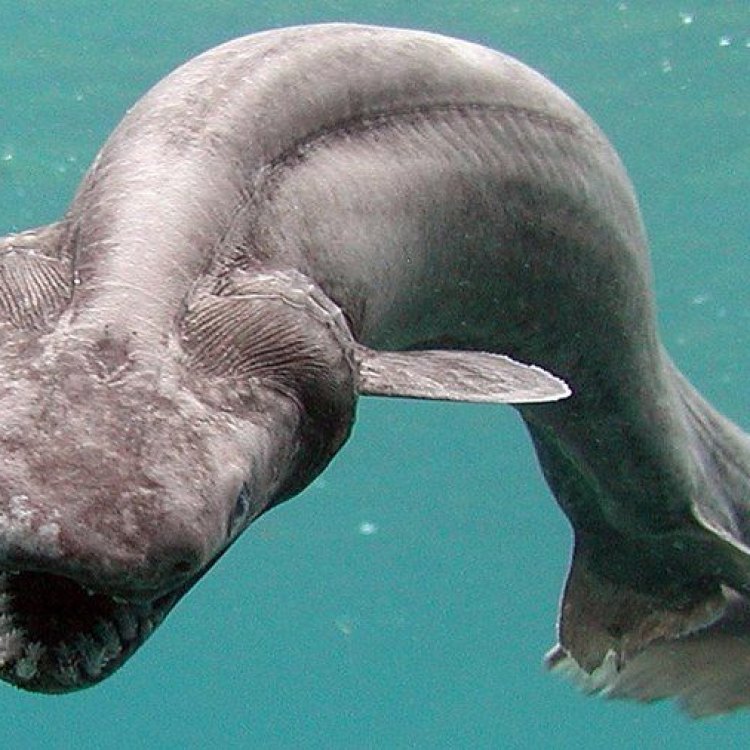
The Enigmatic Frilled Shark: A Deep-Sea Predator
Disclaimer: The content provided is for informational purposes only. We cannot guarantee the accuracy of the information on this page 100%. All information provided here may change without prior notice.






